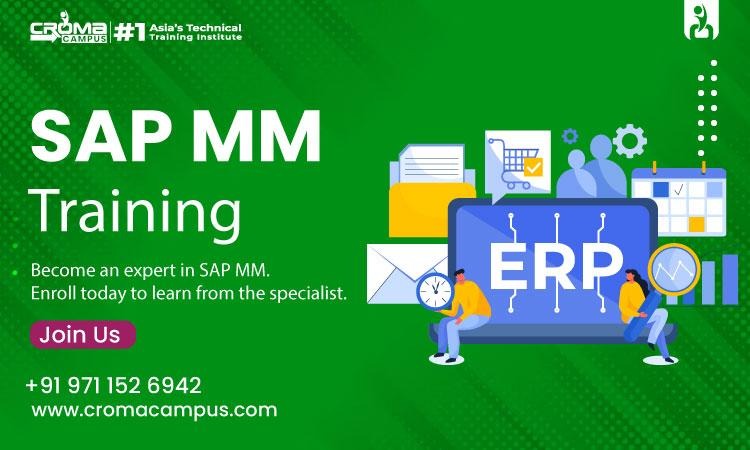Introduction
A critical module in SAP ERP, SAP Material Management (MM) controls all procurement and inventory operations inside a business. It guarantees supplies are at the right time, location, and cost. Other modules including SD, PP, and FICO link with SAP MM to simplify material flow, purchasing, and financial monitoring across business processes. Enhance your procurement and inventory management skills with SAP MM Training designed for real-time industry applications.
Important SAP MM Components
Core functional module in SAP ERP, MM manages whole procurement and inventory management process. In a methodical and effective manner, it guarantees the internal organizational material flow. To guarantee seamless operations throughout supply chain procedures, SAP MM connects with other modules including SD, PP, and FICO.
1. Material Master
All material data is housed in a central database by the Material Master component. From purchasing, inventory, accounting, and sales point of view, it includes data on materials. Every department has access to the same material data, therefore avoiding redundancies. Views for material master data include Basic Data, Purchasing, Accounting, and Storage. It supports consistent material descriptions and categorization throughout the company.
2. Vendor Master
Important information about suppliers is kept in the Vendor Master. This information comprises payment conditions, tax information, bank details, and address. SAP MM categorizes vendor information at the general, company code, and buying organization levels. This partition provides different departments with adaptable data management. Consistent vendor data guarantees effective purchase order creation, invoice processing, and payment management.
3. Purchasing Information Record
Linking material and vendor information is the Purchasing Information Record. It offers purchase conditions, delivery timetables, and prices for particular vendor-material mixes. By automatically acquiring pricing and other information throughout procurement, this record streamlines purchase order processing. Keeping exact historic purchase data helps to maximize supplier connections. Join the leading SAP MM Training Institute in Gurgaon to gain hands-on experience in material management and SAP integration.
4. Source List
For specified materials within a given time frame, the Source List specifies approved suppliers. By limiting unlawful vendor use, it helps govern procurement. To recommend or guarantee genuine sources, the system checks the source list during purchasing requisition handling. This guarantees adherence to sourcing rules and enhances vendor management efficiency.
5. Purchase Requisition and Purchase Order
The procurement process starts with a Purchase Requisition. It finds material requirements and sets off purchase order construction. A formal contract between a buyer and a supplier for material supply is the Purchase Order. Based on set criteria and source lists, SAP MM enables automatic purchase order generation. It also checks invoice verification, delivery, and order status.
6. Inventory Management
Real-time monitoring of material movement and stock levels is done by inventory management. It logs goods receipts, goods issues, and stock moves between warehouses or factories. The scheme guarantees proper valuation and quantity updating. It connects with financial accounting to show fluctuations in stock worth. This part helps in tracking inventories depending on either volume or worth.
7. Invoice Verification
Invoice Verification comes last in the procurement process. It checks vendor invoices against purchase orders and receipts for products. Quantities, prices, and payment terms are automatically checked by SAP MM. Once confirmed, the invoice posts to Financial Accounting for payment processing. This part helps to avoid double billing and guarantee payment accuracy.
| Component | Primary Function |
|---|---|
| Material Master | Centralized material data management |
| Vendor Master | Supplier information storage |
| Purchasing Info Record | Vendor-material linkage |
| Source List | Vendor authorization for materials |
| Purchase Order | Formal procurement document |
| Inventory Management | Stock movement and valuation |
| Invoice Verification | Validation of vendor invoices |
Conclusion
One platform in SAP MM combines procurement and inventory operations. Its elements assist to guarantee compliance, improve operational visibility, and preserve correct data. Boost your career with a professional SAP MM Course in Bangalore and master essential business processes in supply chain management. Controlling materials, simplifying supply chain operations, and upholding financial accuracy across the whole company depend on every component.
